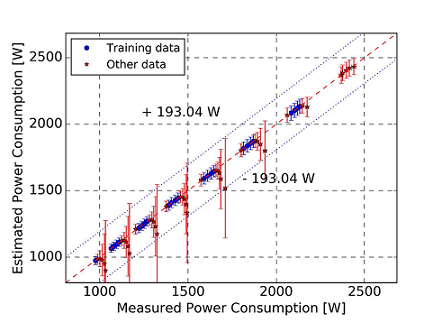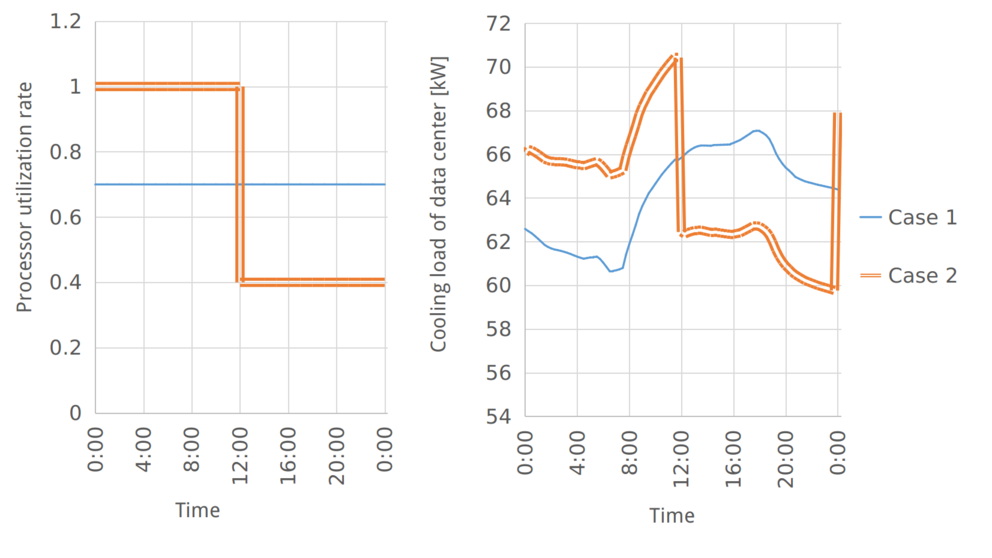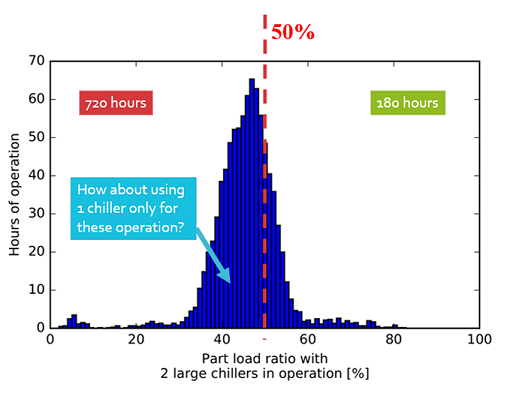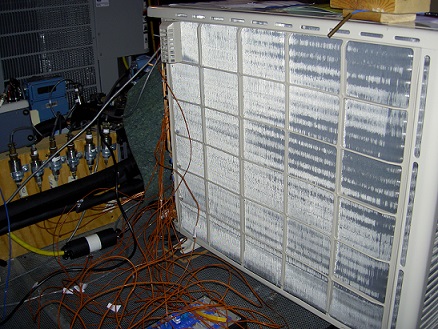Projects
I am working on multiple research projects and some open-source projects for everybody to enjoy. Check them out below!
Open-source softwares and projects
Current
Data Preprocessing Helper
I made this Windows application to help building engineers to preprocess their building management system (BMS) data for easier analysis in spreadsheet format. Issues it solves includes filling in gaps of data and aligning the recording time of the data. It also works for other types of time-series data as well. Check the website and the repository for more information over here. The project is mainly built in Python.

Previous
Openstudio fault models
I worked on this project previously to create models of faults (e.g. deviation from design) of building equipment for building simulation in OpenStudio. You can download the OpenStudio and EnergyPlus measure scripts in the repository to model the impact of different types of building equipment faults on building thermal performance and energy consumption. You can also read the details of the models I made in the technical report Development of Fault Models for Hybrid Fault Detection and Diagnostics Algorithm or conference paper Hybrid Model-Based and Data-Driven Fault Detection and Diagnostics for Commercial Buildings. The measure scripts are built by Ruby with post-processing being conducted by R.
Research projects
Current
Building energy auditing and analytics
I am working on some new and exciting projects related to building energy auditing and analytics. If you want someone to work on similar projects that require related skills, please contact me at howard.cheung@carbonexchange.net. We can discuss further on that!
Uncertainty calculation for thermal system applications
I have spent quite some time to work on calculation of uncertainties due to various factors such as regression data measurement uncertainties, choice of regression data, model structure, etc. for thermal system models. There are some publications about the research for compressor models, and the project is still on-going for other thermal applications. If you want to know more, you can look it up at my publication list or contact me directly at howard.at@gmail.com!

Previous
I am still organizing this section and haven’t listed everything yet. In the meantime, check out my publication list for more information!
Data center energy management solution
I have worked on energy management solutions such as design and controls of cooling systems in data centers to reduce their cooling system energy consumption. Currently, I have built a model in building simulation programs to estimate the changes of data center power consumption with the status of the computing equipment in a data center.

Building energy assessment
I have worked on on examining the energy-saving potentials and faults in various building systems to reduce their energy consumption. Issues like chiller and pump sequencing, overcooling, low-Delta-T syndromes are being examined, and their control systems are being configured to reduce the unnecessary energy consumption caused by these issues.

Evaluating performance of a building audit tool
I worked on an evaluation project of the performance of an automatic building audit tool for small commercial buildings. The tool estimates the type of energy uses in a building and diagnoses operation issues that burdens the building energy bills unnecessarily, and building owners can fix the issues to save some money. To know if the tool performance meets its claims, I evaluated its accuracy and reliabililty to estimate the end uses and to conduct the diagnoses using more than 2,000 building simulation scenarios on the cloud. More details can be found at the technical report Methodology to Assess No Touch Audit Software Using Simulated Building Utility Data.

Modeling of HVAC equipment faults in energy models of commercial buildings
Please refer to the development of the open-source software Openstudio fault models. In case you don’t know, HVAC means heating, ventilating and air conditioning (Wikipedia).
Inverse modeling to simulate fault impacts for air conditioning equipment
This is my PhD thesis project related to the study of the impact of air conditioner faults on the performance of air-conditioners. How do faults affect the operation mechanisms and hence increase the operation cost of the air conditioners? The faults modeled include
- Under- and over-charging (i.e. too little or too much refrigerant)
- Heat exchanger fouling
- Refrigerant pipeline blockages (i.e. refrigerant pipeline blockages)
- Compressor valve leakages
- Electronic valve opereation failure
- Non-vacuumed air conditioner before charging
and they all show adverse effect to both the cooling capacity and efficiency of the air conditioners. In other words, they increase the operation cost of your ACs. For example, the diagrams below show that air (non-condensable) inside the air conditioner can significantly increase the power consumption, and the lack of charge (refrigerant) can significantly reduce the amount of cooling an air conditioner can deliver.

The modeling was mainly conducted in MATLAB with a few dynamic libraries written in C++.
Low-cost virtual power meter for rooftop units
I developed a low-cost estimator of power consumption of rooftop air conditioners using temperature readings only. With the virtual power meter, only temperature sensors are needed to estimate the power consumption of an air conditioner correctly, and no expensive power meters are needed. This helps the manufacturer to provide power readings of their air conditioners during operation and helps to monitor their energy consumption for building energy management more cost effectively.
Testing and Modeling of Dual-Unit Ductless Heat Pump System
I tested the performance of multiple ductless heat pump systems, including one with two indoor units, in psychrometric chambers. This helped to validate the field testing results of these systems for a comparison of their energy efficiency with that of conventional heating systems. I also created empirical models of these systems using the test results to help modeling their performance in building simulation programs, including their performance under defrost operation. To understand how they operated, I also modeled their operation using mechanistic models to examine how the refrigerant flows are controlled inside the indoor units, especially when multiple indoor units are involved.

Relevant publications
Here is a listed of publications ordered according to the nature of the projects instead of the type of publication. Note that a publication can appear in this list multiple times if it is related to multiple projects. For a clean list of publications, please read here.
Data center energy management solution
-
Cheung, H., Wang, S., Zhuang, C., & Gu, J. (2018). A simplified power consumption model of information technology (IT) equipment in data centers for energy system real-time dynamic simulation. Applied Energy, 222, 329–342. [Postprint hosted here]
-
Cheung, H., Wang, S., Zhaung, C., (2017), Development of a simple power consumption model of information technology (IT) equipment for building simulation, 9th International Conference on Applied Energy, Cardiff, UK, [Postprint hosted here]
Building energy assessment
- Cheung, H., Shan, K., Wang, S., (2017), A fault-tolerant control method of balancing valves for condenser fouling in water-cooled chillers, 9th International Conference on Applied Energy, Cardiff, UK, [Postprint hosted here]
OpenStudio fault modeling/ Modeling of HVAC equipment faults in energy models of commercial buildings
-
Frank, S., Heaney, M., Jin, X., Robertson, J., Cheung, H., Elmore, R. and Henze, G. (2016), Hybrid Model-Based and Data-Driven Fault Detection and Diagnostics for Commercial Buildings, 2016 ACEEE Summer Study on Energy Efficiency in Buildings, Pacific Grove, California [External link for a free preprint]
-
Cheung, H. and Braun, J. E., (2015), Development of Fault Models for Hybrid Fault Detection and Diagnostics Algorithm, NREL/SR-5500-65030. Golden, CO: National Renewable Energy Laboratory [External link for a free copy]
Uncertainty calculation for thermal system applications
-
Cheung, H. and Wang, S., (2018), Impact of Dynamics on The Accuracies of Different Experimental Data Processing Methods for Steady-state Heat Transfer Rate Measurement, Journal of Thermal Science and Engineering Applications, [DOI link]
-
Cheung, H. and Wang, S., (2018), Performance Comparison of Empirical and Semi-empirical Compressor Models with Uncertainty Analysis and Probabilistic Forecasting Techniques. Proceedings of the 17th International Refrigeration and Air Conditioning Conference at Purdue, West Lafayette, Indiana [Postprint hosted here]
-
Li, H., Wang, S. and Cheung, H. (2018). Sensitivity analysis of design parameters and optimal design for zero/low energy buildings in subtropical regions. Applied Energy, 228, 1280-1291. [DOI link] [Postprint hosted here]
-
Cheung, H., Frutiger, J., Bell, I. H., Abildskov, J., Sin, G. and Wang, S. (2018), Uncertainty Quantification of Experimental Air Conditioner Performance due to the Uncertainty of the Equation of State. Proceedings of the 17th International Refrigeration and Air Conditioning Conference at Purdue, West Lafayette, Indiana [Postprint hosted here]
-
Cheung, H. and Wang, S., (2017), A comparison of the effect of empirical and physical modeling approaches to extrapolation capability of compressor models by uncertainty analysis: A case study with common semi-empirical compressor mass flow rate models, International Journal of Refrigeration, [DOI link][Postprint hosted here]
-
Cheung, H., Sarfraz, O. and Bach, C. K., (2017), A method to calculate uncertainty of empirical compressor maps with the consideration of extrapolation effect and choice of training data, Science and Technology for the Built Environment, [DOI link] [Postprint hosted here]
-
Cheung, H. and Braun, J. E., (2016), Minimizing data collection for field calibration of steady-state virtual sensors for HVAC equipment, International Journal of Refrigeration, 69, 96-105, [DOI link]
-
Cheung, H. and Braun, J. E., (2016), A general method for calculating the uncertainty of virtual sensors for packaged air conditioners, International Journal of Refrigeration, 63, 225-236, [DOI link]
-
Bach, C. K. and Cheung, H., (2016), Mapping of Vapor Injected Compressor with Consideration of Extrapolation Uncertainty, Conference proceedings of ASHRAE Winter Conference 2016, OR-16-C042 [External link]
Evaluating performance of a building audit tool
- Cheung, H., Braun, J. E. and Langner, M. R., (2016), Methodology to Assess No Touch Audit Software Using Simulated Building Utility Data, NREL/SR-5500-66001. Golden, CO: National Renewable Energy Laboratory [External link for a free copy]
Inverse modeling to simulate fault impacts for air conditioning equipment
-
Cheung, H. and Braun, J. E., (2013), Simulation of Fault Impacts for Vapor Compression Systems by Inverse Modeling Part I: Component Modeling and Validation, HVAC&R Research, 19:7, 892-906, [DOI link]
-
Cheung, H. and Braun, J. E., (2013), Simulation of Fault Impacts for Vapor Compression Systems by Inverse Modeling Part II: System Modeling and Validation, HVAC&R Research , 19:7, 907-921, [DOI link]
-
Yuill, D. P., Cheung, H. and Braun, J. E., (2014), Evaluation of Fault Detection and Diagnostics Tools by Simulation Results of Multiple Vapor Compression Systems. Proceedings of the 15th International Refrigeration and Air Conditioning Conference at Purdue, West Lafayette, Indiana [External link for a free copy]
-
Yuill, D. P., Cheung, H. and Braun, J. E., (2014), Validation of a Fault-Modeling Equipped Vapor Compression System Model Using a Fault Detection and Diagnostics Evaluation Tool. Proceedings of the 15th International Refrigeration and Air Conditioning Conference at Purdue, West Lafayette, Indiana [External link for a free copy]
-
Cheung, H. and Braun, J. E., (2014), Modeling of Fault Impacts for a Multi-split Ductless Heat Pump System. Proceedings of the 11th IEA Heat Pump Conference 2014, Montreal, Quebec [Preprint]
-
Cheung, H. (2014). Inverse modeling of vapor compression equipment to enable simulation of fault impacts (PhD Dissertation). Purdue University, West Lafayette, IN. [External link] [File hosted here]
-
Cheung, H. and Braun, J. E., (2012), Inverse Modeling to Simulate Fault Impacts for Vapor Compression Equipment Part 2: System Modeling and Validation, Proceedings of 14th International Refrigeration and Air Conditioning Conference at Purdue, West Lafayette, Indiana [External link for a free copy]
-
Cheung, H. and Braun, J. E., (2012), Performance Mapping for Variable Ductless Heat Pump Systems in Heating, Cooling and Defrost Operation, Proceedings of 14th International Refrigeration and Air Conditioning Conference at Purdue, West Lafayette, Indiana [External link for a free copy]
Low-cost virtual power meter for rooftop units
-
Cheung, H. and Braun, J. E., (2016), Minimizing data collection for field calibration of steady-state virtual sensors for HVAC equipment, International Journal of Refrigeration, 69, 96-105, [DOI link]
-
Cheung, H. and Braun, J. E., (2016), A general method for calculating the uncertainty of virtual sensors for packaged air conditioners, International Journal of Refrigeration, 63, 225-236, [DOI link]
-
Cheung, H. and Braun, J. E., (2014), Virtual Power Consumption and Cooling Capacity Virtual Sensors for Rooftop Units. Proceedings of the 15th International Refrigeration and Air Conditioning Conference at Purdue, West Lafayette, Indiana [External link for a free copy]
Testing and Modeling of Dual-Unit Ductless Heat Pump System
-
Cheung, H. and Braun, J. E., (2014), Component-based, gray-box modeling of ductless multi-split heat pump systems, International Journal of Refrigeration, 38, 30-45, [DOI link]
-
Cheung, H. and Braun, J. E., (2014), Performance Mapping for Variable-speed Ductless Heat Pump Systems in Heating and Defrost Operation, HVAC&R Research, 20:5, 545-558, [DOI link]
-
Cheung, H. and Braun, J. E., (2014), Performance Comparisons for Variable-Speed Ductless and Single-Speed Ducted Residential Heat Pumps, International Journal of Refrigeration, 47, 15-25, [DOI link]
-
Cheung, H., Nyika, S. and Braun, J. E., (2013), Development and Validation of a Mechanistic Model for Variable-Speed Multi-split Heat Pumps, ASHRAE Transactions, 119: B1 [External link]
-
Cheung, H. and Braun, J. E., (2012), Performance Mapping for Variable Ductless Heat Pump Systems in Heating, Cooling and Defrost Operation, Proceedings of 14th International Refrigeration and Air Conditioning Conference at Purdue, West Lafayette, Indiana [External link for a free copy]
-
Cheung, H. and Braun, J. E., (2010), Performance Characteristics and Mapping for a Variable-Speed Ductless Heat Pump, Proceedings of 13th International Refrigeration and Air Conditioning Conference at Purdue, West Lafayette, Indiana [External link for a free copy]
Others
- Tang, R., Wang, S., Shan, K., & Cheung, H. (2018). Optimal control strategy of central air-conditioning systems of buildings at morning start period for enhanced energy efficiency and peak demand limiting. Energy, 151, 771–781. [DOI link]